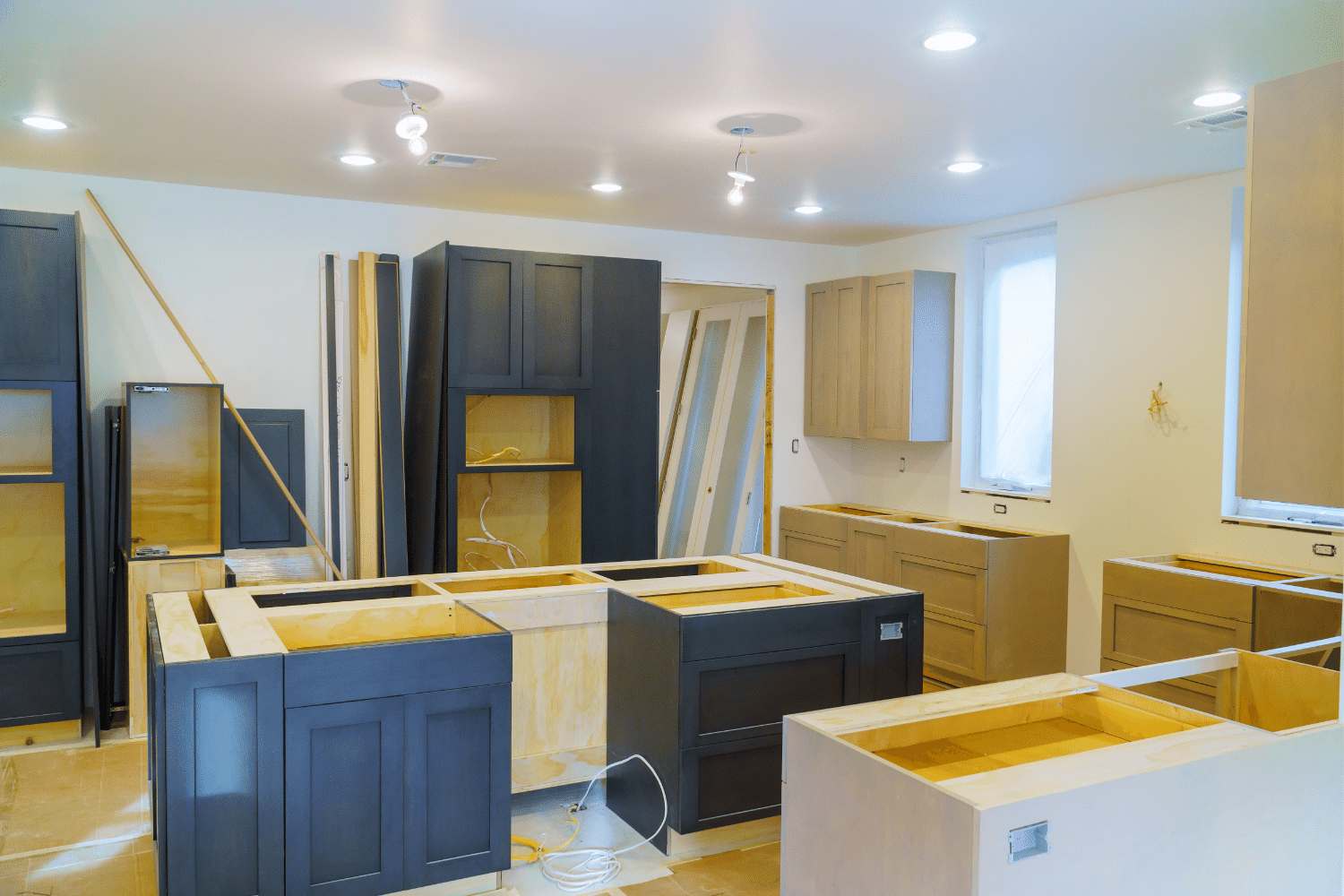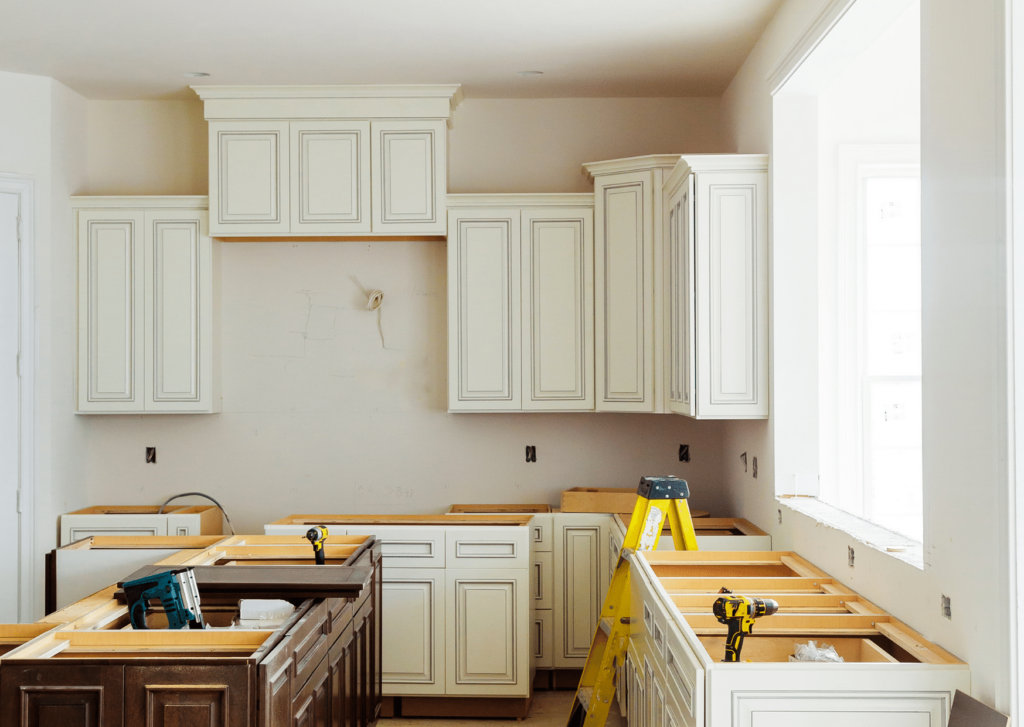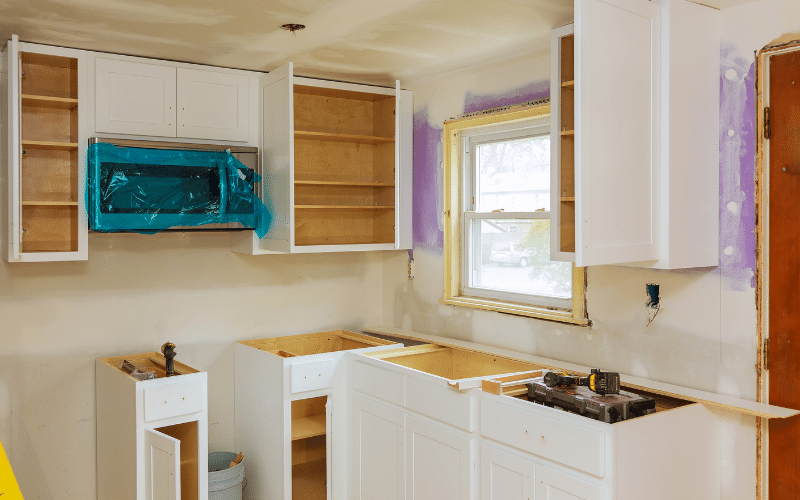
DIY Kitchen Remodel is a fantastic way to save money and make your kitchen the perfect space for you. In this article, we will answer common questions about DIY Kitchen Remodels including how much does it cost? What are the best tools to use? And what are some tips for starting your project!
Table of Contents
It is hard to put a price tag on DIY Kitchen Remodel because of the different projects and budgets, but it can range from £2000-£2500. You will need new cabinets for around £500-1000 per cabinet, countertops for about £1500-3000 depending on selection, appliances for an average of £600 each (but be sure to get quotes before you buy), flooring at roughly with ceramic tile running 45 cents per square foot or linoleum/vinyl costing less then 20 cents per square foot.
Be careful not to forget other costs such as lighting fixtures, plumbing fixtures like sinks and faucets which come in many styles including traditional copper or contemporary stainless steel. If you are determined to do your own electrical work, it is advised to hire an electrician for guidance.
The best way to renovate your kitchen cheaply is by not buying high-end appliances. If you can live without an oven, refrigerator and dishwasher, you'll be able to save a lot of money on these items alone. You will also want to have patience when shopping for materials as prices will fluctuate based on the day's supply and demand.
Don't forget that many homeowners associations charge hefty fines if renovations are made without permission from them first so make sure you check with them before beginning any work or purchasing new cabinets/countertops/appliances etc., because they might need to approve those things too in order for it all to comply with HOA code.

Although there are specific benefits if you're going to be doing a DIY kitchen remodel, the answer is that it's really up to your own personal preference.
There are many different things that go into each decision such as how much time and money you have available for renovations. Another factor would be how old/new your cabinetry currently is and what quality of materials they're made from; this will help determine whether you should spend more on refacing instead of replacing them entirely.
If your current cabinets don't look too bad overall, then refinishing may save some major cash but again, these options depend heavily on person preferences so make sure to do some research before deciding anything for yourself!
This depends on how much remodeling you want to do. If it's just a kitchen makeover, then the time can range from two days and up (depending on size of space). However if you're planning on adding a lot more or replacing cabinets altogether, then this could take weeks.
A DIY Kitchen Remodel is an investment in your home that will last way longer than many other projects so when deciding what direction to go with this project; remember these key points:
-Think about what your family needs are for cooking/entertaining purposes before starting any work because kitchens don't always have enough storage as they age. This may mean rethinking layouts, like installing upper cabinetry over lower ones or rearranging appliances.
-Putting in a new countertop is also an option to consider, but these can be the most expensive part of the project so it's worth considering what type you want and if an existing one could be refinished instead.
There are other options like upgrading your sink or adding extra storage from cabinets that may not have been installed yet before starting more significant work, which will save time and money later down the line.
-Make sure to remove all cabinet doors when taking them off for sanding/painting because they're heavy! It helps to put everything on sawhorses in order to keep things level while working with power tools (or better still...use a power tool!)
-Buy a small container of paint in the same color as your cabinets. This way you can make touch up more quickly and less expensively!
-If possible, try to do this DIY Kitchen Remodel on a weekend so that people don't see you working during the weekdays. You'll also want to block off adjacent rooms with plastic sheeting or other temporary materials for dust containment if necessary.

Start at the top of your kitchen and work down.
-Remove all cabinet doors to paint or sand them. Put everything on sawhorses for stability while using power tools!
-If you have a range, remove it before anything else because they're usually heavy and difficult to move around once installed in place. If not then don't be surprised if people see you working during the weekdays - block off adjacent rooms with plastic sheeting as necessary for dust containment!
-Paint/sanding is next, do this from top to bottom so that any overspray doesn't get onto freshly painted surfaces below (also watch out for falling debris!). The last thing you'll want to do is install new hardware such as cabinet doors and drawer fronts to finish off everything neatly.
-We recommend using a tack cloth or similar product before you paint in order to make sure that all debris is removed from the surface first!
-For heavy duty jobs such as sanding, we also recommend wearing a mask because of all the fumes released into the air while working with power tools.
-When installing new hardware onto cabinets, be mindful of how it will affect your wall space - take measurements ahead of time for specific units or draw up rough sketches on paper so that nothing goes wrong later down the line.
Repeat these steps until there's no more work left to do! You're done when every inch has been touched 🙂